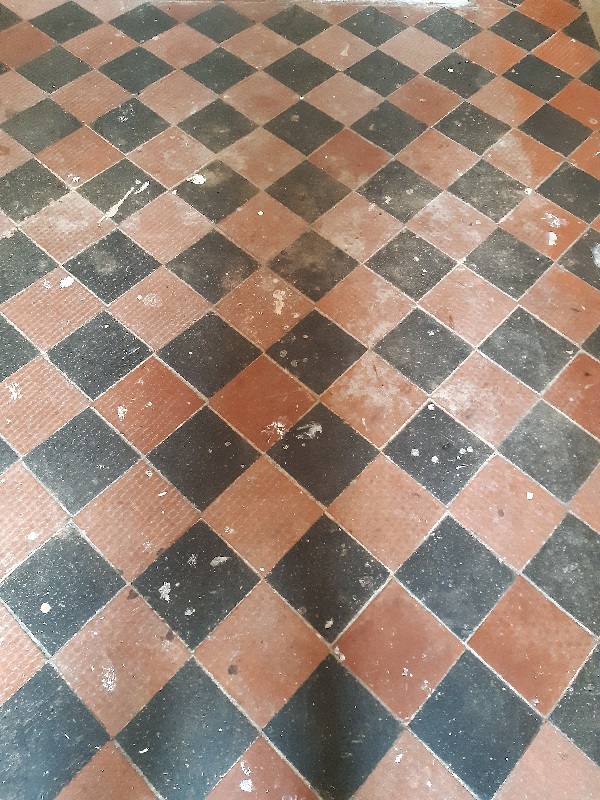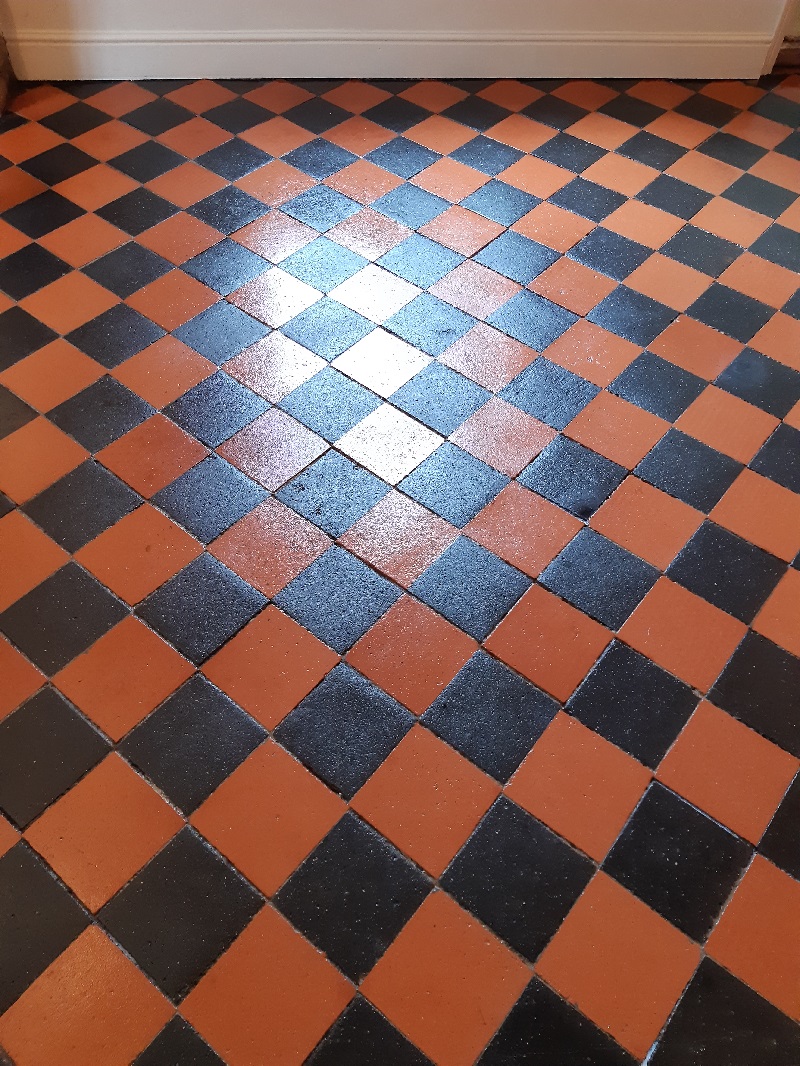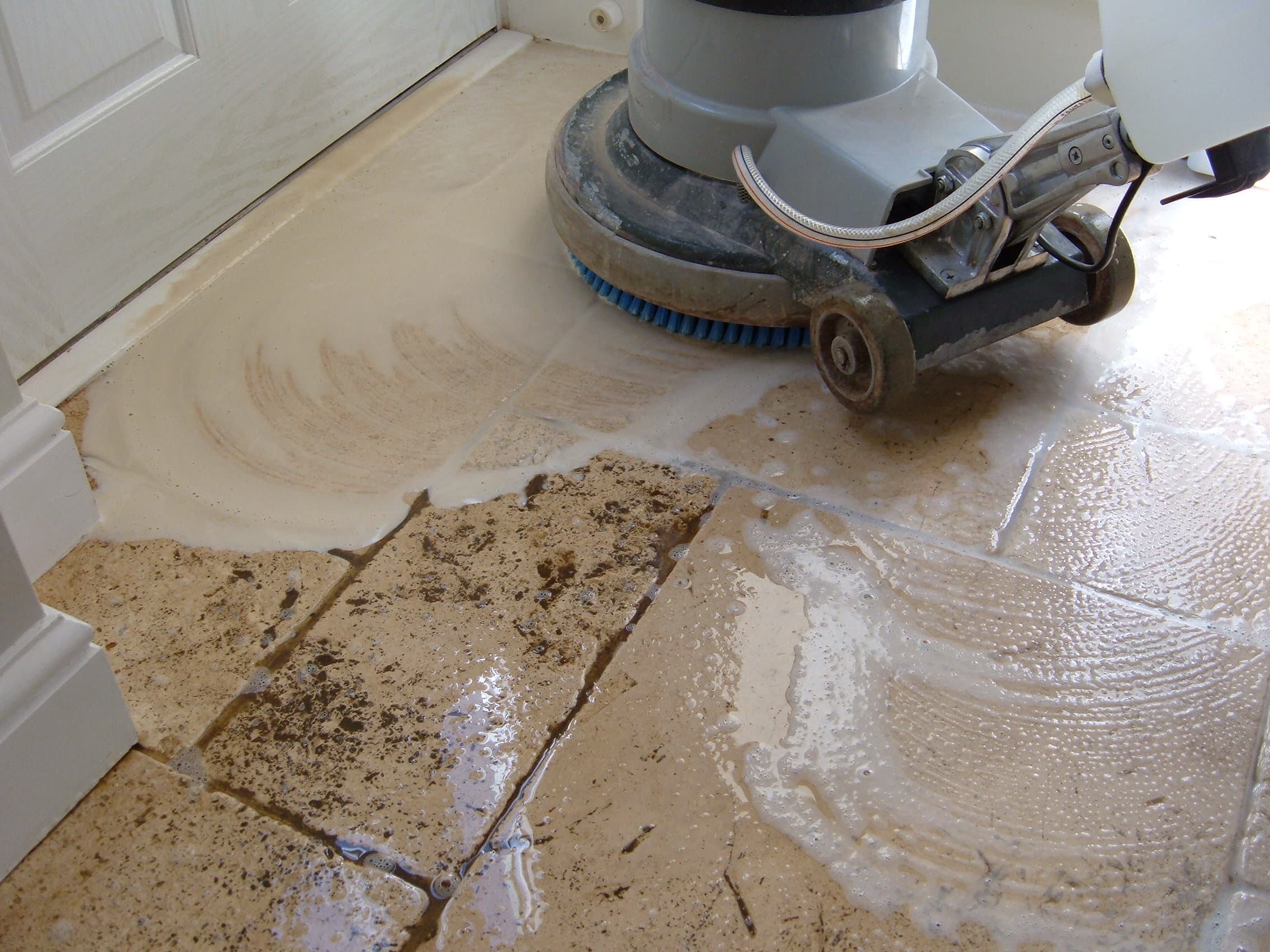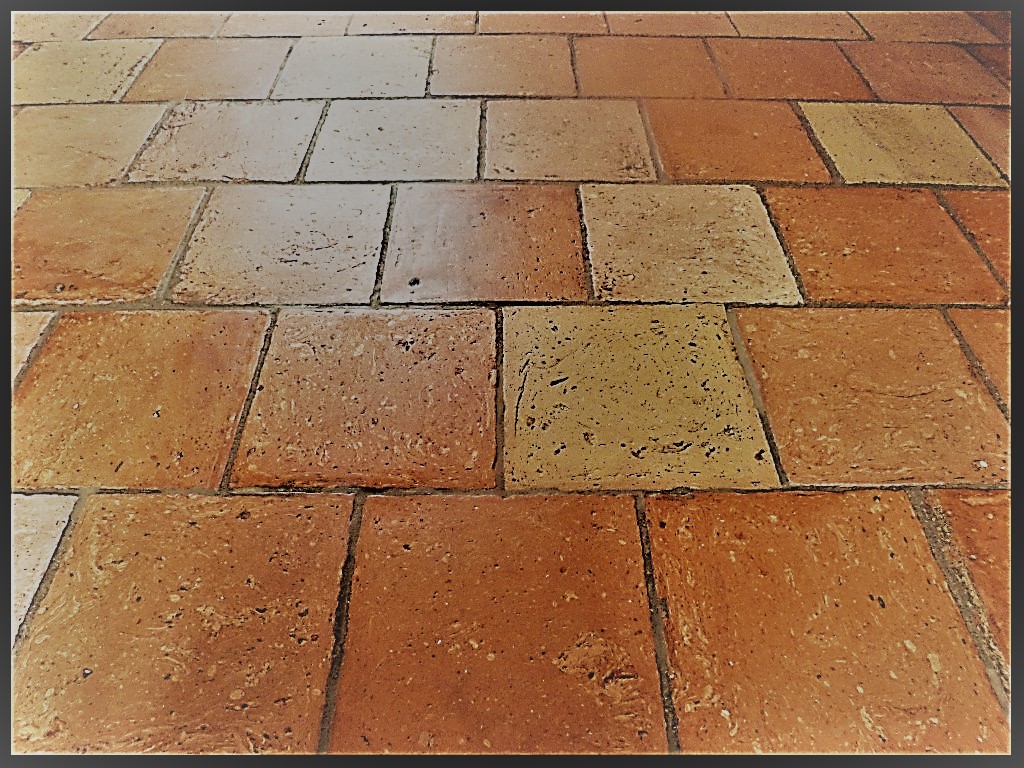Renovation of a Victorian Tiled Hallway in Attleborough following Building Work
A client in the town of Attleborough, Norfolk contacted us about her Victorian tiled hallway following a recommendation from a neighbour. She wanted to get the floor renovated and had been struggling to find someone with the appropriate knowledge and experience to complete the work. She had tried to clean the floor herself but had little success and decided it was time to call in the experts.

The whole house was being renovated and unfortunately the contractors working in the property had not taken care to cover up the hallway floor and it has subsequently become covered in all sorts of mess including a lot of plaster and paint. I explained that this would not be an issue and we were confident that we could remove all the contaminants and restore the floor to its former glory.
I created a quote for doing the renovation which would take two days, one to clean and one to seal. Happy with my quotation, we scheduled a date for our return which was to follow the conclusion of all remaining building works.
Deep Cleaning a Victorian Tiled Floor in Attleborough
Before starting the renovation of her floor, our first job was to cover the walls and skirting with masking film to protect the newly plastered walls from splashes during cleaning. Next, with a focus on removing the paint splatters, a generous quantity of Tile Doctor Remove & Go was sprayed onto the tiles and left to dwell for ten minutes so it could get to work breaking down the dirt and softening the paint. Then using a black scrubbing pad fitted to our Klindex rotary buffing machine, the solution was scrubbed into the surface to remove as much of the contaminants and old now-ineffective coatings as possible. Once done, the resulting slurry was extracted away using an industrial wet vacuum.
The next step was to treat the floor to an acid scrub using Tile Doctor Acid Gel which was applied and left for five minutes before working in with a coarse 100-grit diamond pad. This treatment has a lot of benefits for tiled floors and is great for removing old cement, grout smears and other contaminants such as efflorescence salt deposits. Being acidic it also neutralises the pH of the floor following the use of Remove and Go earlier which is a strong alkaline. The floor was then wet vacuumed again and the process repeated with a finer 200-grit pad.
Sealing a Victorian Tiled Floor in Attleborough
The floor was left to dry out overnight and then on our return it was tested with a damp meter to ensure it had dried and was now ready for sealing. The moisture readings were good, so we were happy to go ahead and apply the sealer.
We had discussed finish options with the customer earlier and as a result Tile Doctor Seal & Go Extra was chosen. This is a fully breathable exterior grade product which provides high stain resistance and is perfect for high traffic areas such as hallways. It improves the colours in the tiles and has a low sheen finish so does not make the floor look too shiny. Five coats of sealer were applied leaving each one to dry before the next was applied.

My client was amazed how well her floor had come up and was delighted that the building contractors had not permanently ruined it! For aftercare cleaning I recommended the use of Tile Doctor Neutral Cleaner which is a highly effective yet gentle tile cleaning product that doesn’t damage acrylic finishes.
Professional Victorian Hallway Floor Renovation in Norfolk
Renovation of a Victorian Tiled Hallway in Attleborough following Building Work Read More »




















